 Cold War spies make waves in the City of Canals. 
The Venetian Affair, which premiered today in 1966, has a rather interesting promo poster. It was painted by U.S. artist Frank McCarthy, who was big in paperback covers early in his career, moved into high-budget movie promos such as James Bond posters, and finally made a mark in realist fine art. We love this piece from him. There's a lot going on. If you check out his effort for You Only Live Twice here you'll see how dense and chaotic his work could be, same as above, where he has people falling off the bridge, off the gondola, and guns being brandished everywhere. In addition, his likenesses of the movie's stars are good. He was a major talent.
The first observation you might make while watching The Venetian Affair is that it would be impossible to make a similar movie in that city today. Nearly four million tourists visited Venice in 2022, making nearly every street—and certainly every site of special historical note—like the mass exodus from a just-completed football game. With that level of humanity about, closing parts of the city or main squares—while maybe possible—would not be practical or economical.
But The Venetian Affair was made back when quiet streets and dark corners existed. Old world architecture always makes for a good spy movie backdrop. That's exactly what you get in this adventure about a mind control drug being used to foment conflict between the U.S. and U.S.S.R. Robert Vaughn stars as a former CIA agent who was fired after he married Elke Sommer, who was suspected of being a double agent. Vaughn never found out whether that was true because he and Sommer were torn apart by turbulent events. But when a bomb blows up a Venice political conference and Sommer is thought to be involved, the CIA drags Vaughn back into its clutches to find Sommer, as well as the crucial clue that might explain the bombing.
Vaughn is a cool and composed actor, any movie with Sommer is one we'll watch, and co-stars Felicia Farr, Luciana Paluzzi, Ed Asner, and the venerable Boris Karloff are all enticements, but we can't say The Venetian Affair is a scintillating example of a Cold War spy flick. It's such a fertile sub-genre, one that produced some of the best movies of 1950s through 1970s. Even against the beautiful Venice backdrop it mostly falls flat due to a screenplay that never hits any highs. But that doesn't mean you shouldn't watch it. Though it lacks highs, it also lack any serious lows. You can spend your time worse ways. Plus—Sommer. What more do you need?
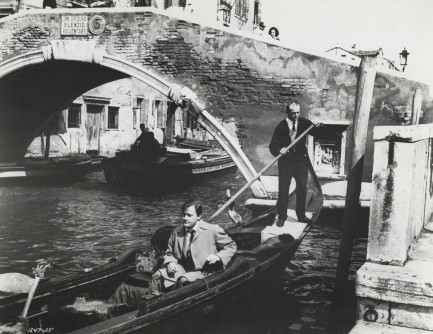 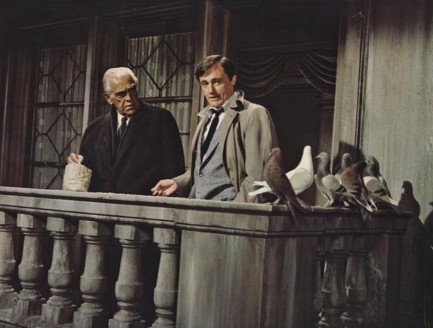 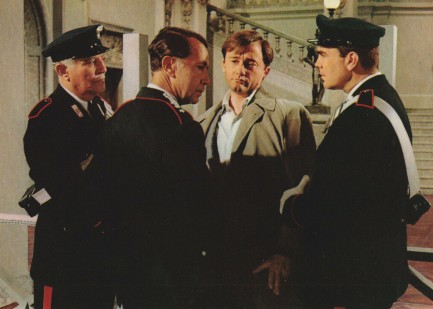 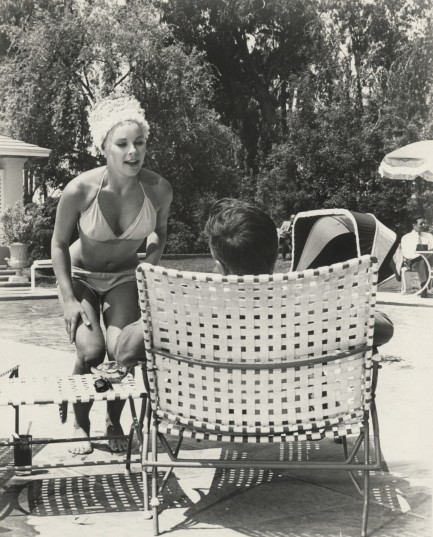   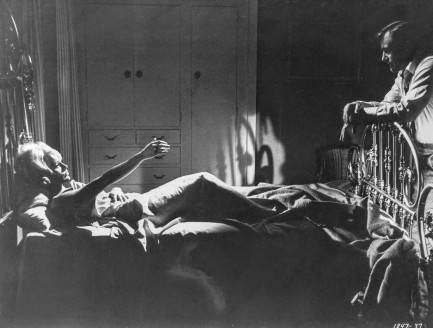 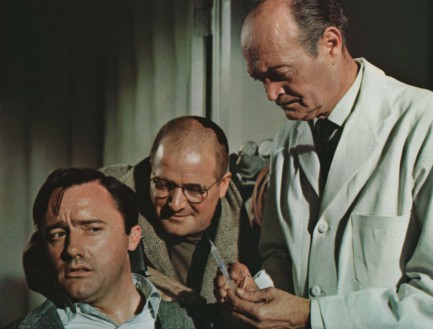 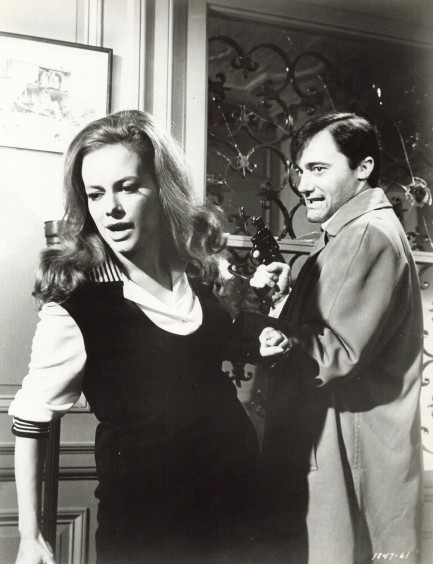 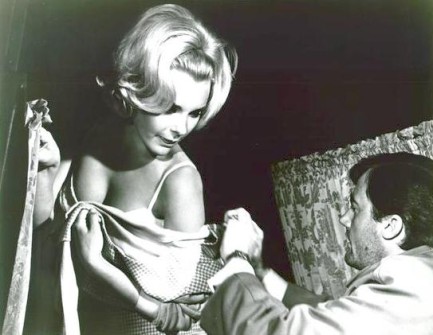 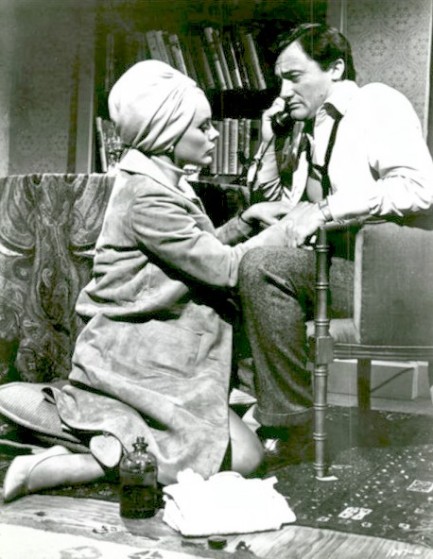 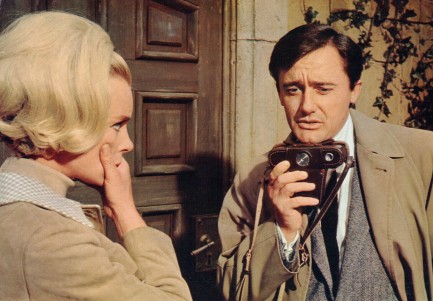 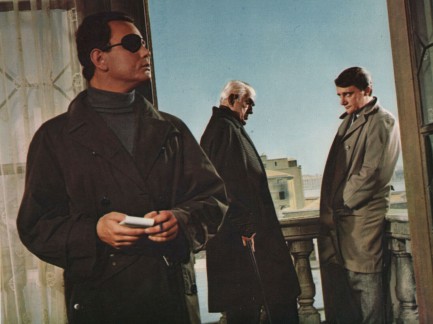 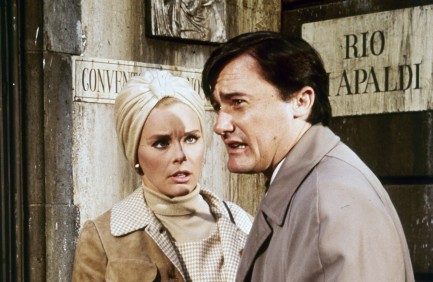 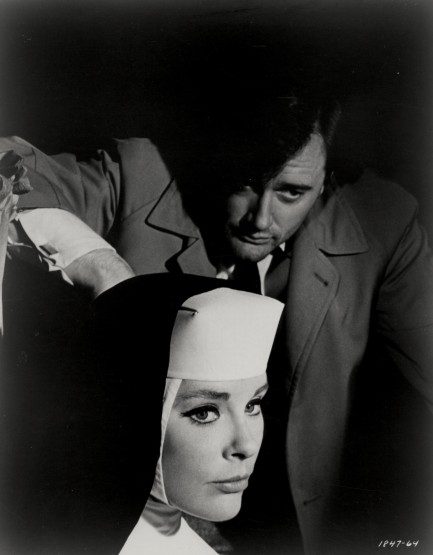 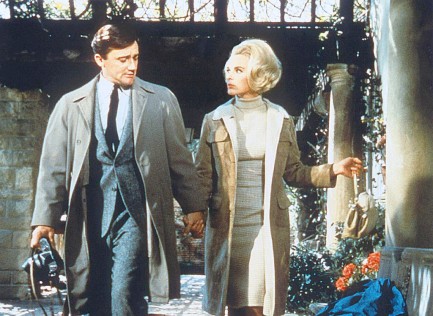 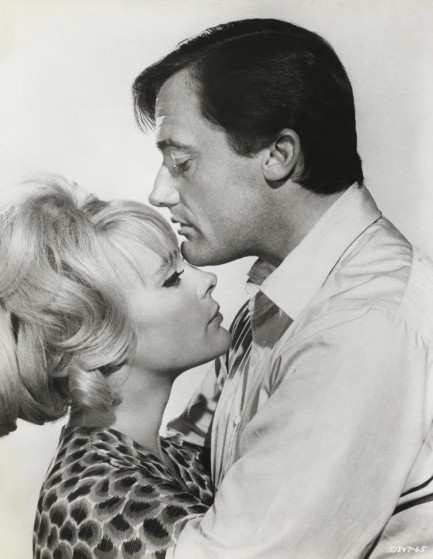 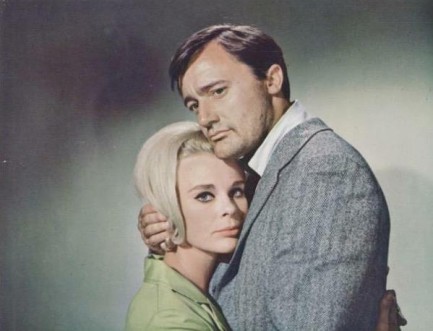 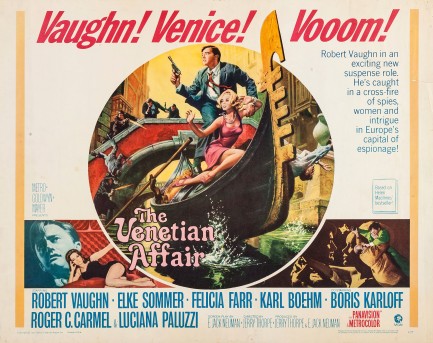 
 That's right, I'm looking at you. Read this magazine and learn how to be a real man. 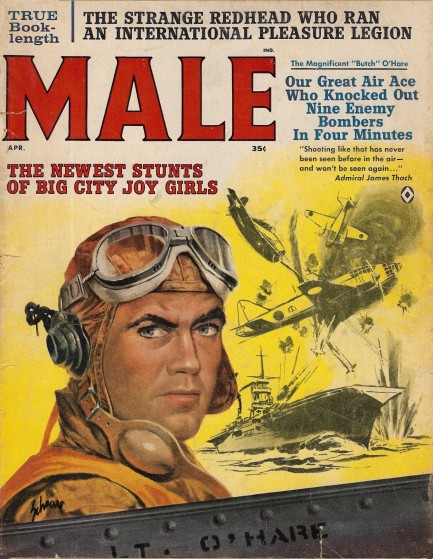
It seems to us that the purpose of men's adventure magazines was to teach ordinary schlubs a little something about how to keep it real, and this issue of Male published in April 1962 fulfills the mandate. Behind the steely-eyed cover art by Harry Schaare, and mixed between interior art by Charles Copeland, Rafael de Soto, James Bama, and Walter Popp, readers learn how to navigate big city vice, survive a nuclear attack, avoid appliance repair scams, pick the perfect car to cruise the open road, and—most importantly—get a raise at their soulsucking office jobs. Those are all fine offerings, but we particularly like the story, “Let's Let the Russians Beat Us to the Moon,” which suggests that if the Russians are so eager to get to the moon let them serve as sacrificial lambs—since the place is filled unknown dangers. Journalist and skeptic Ray Lunt reasons, “For all our scientists know, the moon may be 10,000 miles from where we think it is, paved with quicksand 90 feet deep, and full of brain gas instead of air.” Instead of air? Sounds like he was the one inhaling brain gas. We checked out the story just to find out what brain gas was, and learned basically nothing. He mentions that some scientists—unnamed of course—believe the moon might harbor poisonous gas, but the brain thing never comes up. What a tease. He does, though, run through a long list of other moon horrors fit for a Heinlein novel. He must have been really bummed in 1969 when it turned out to be just a big, dusty rock. We have scans below, and more Male in the website. Feel free to click the keywords. 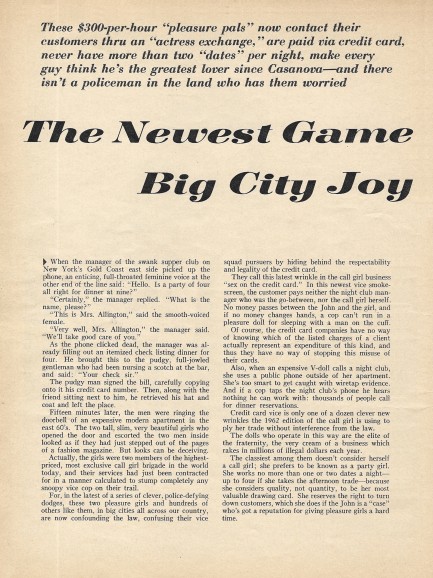  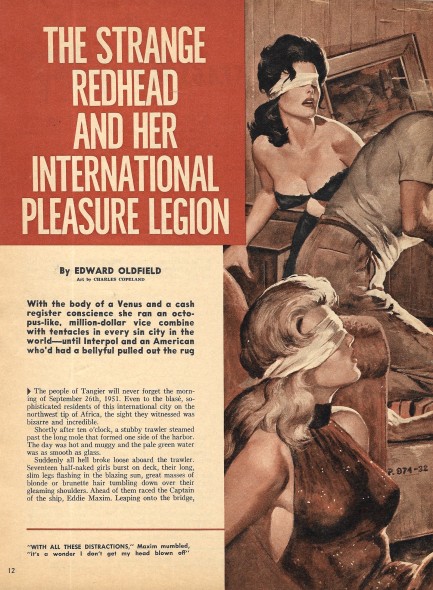 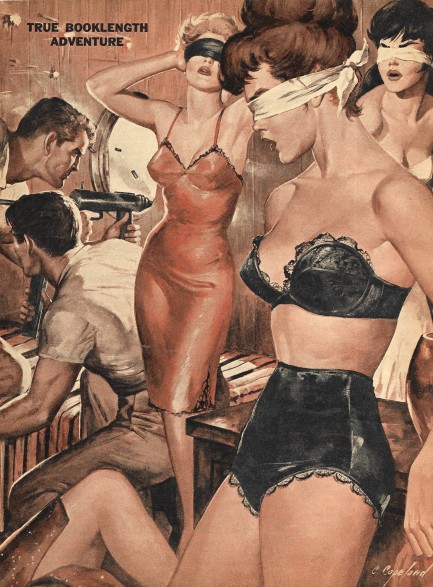    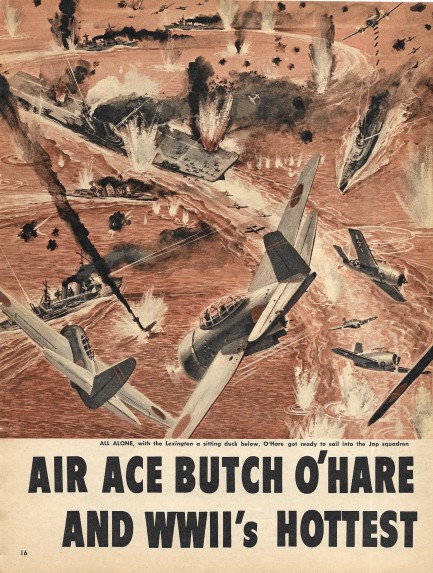 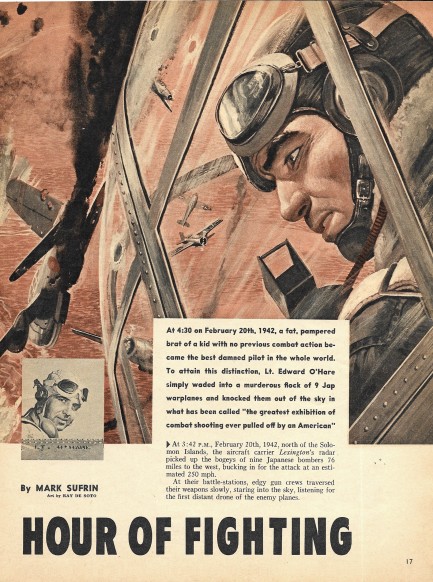 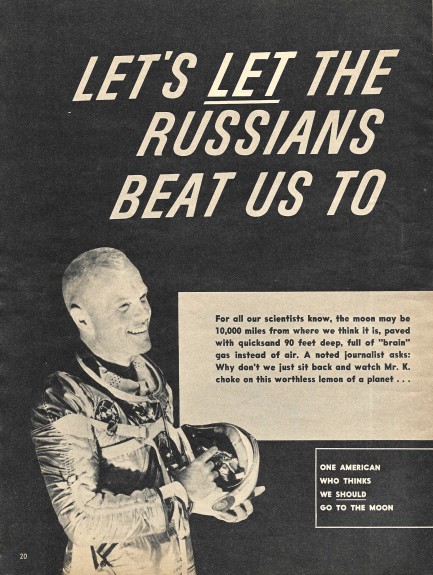 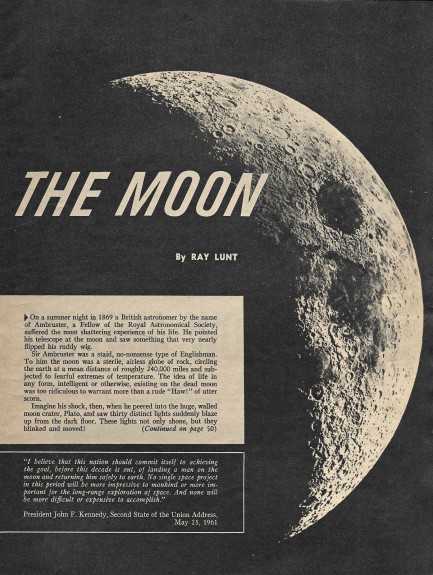 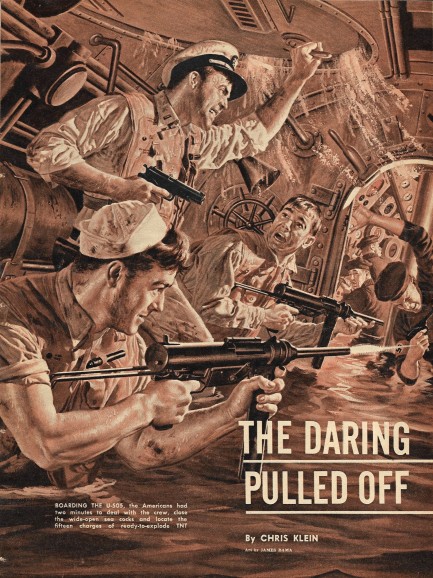 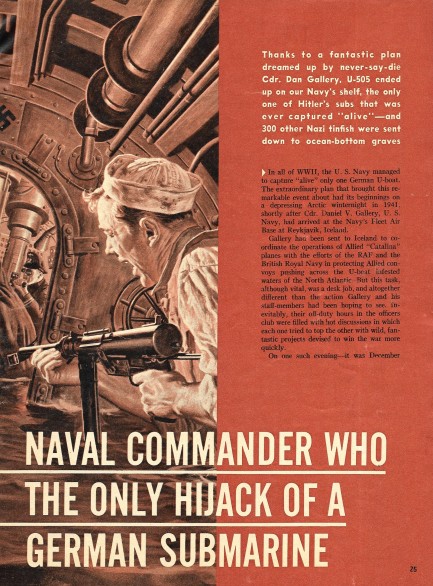 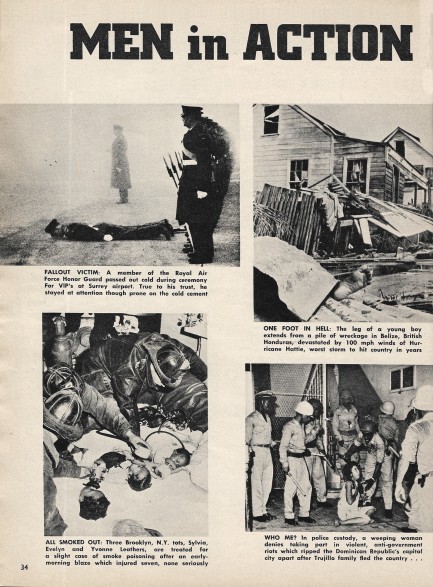 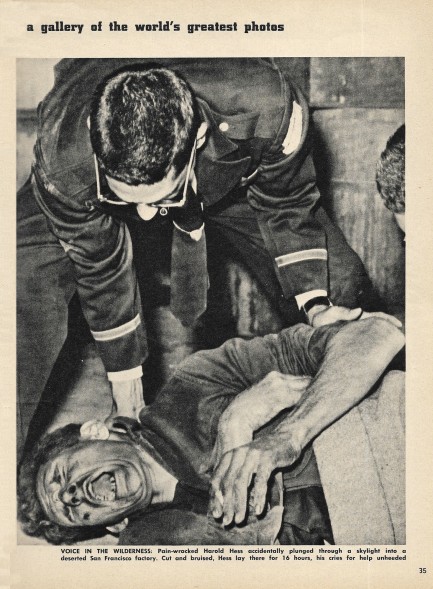 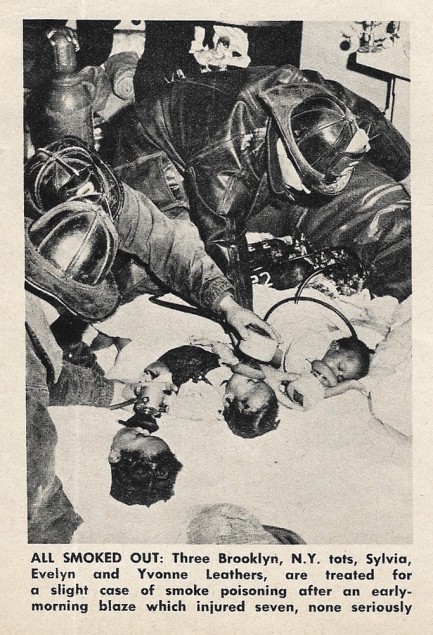  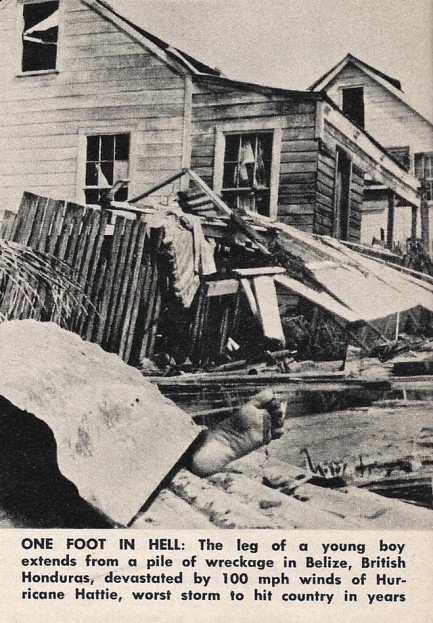 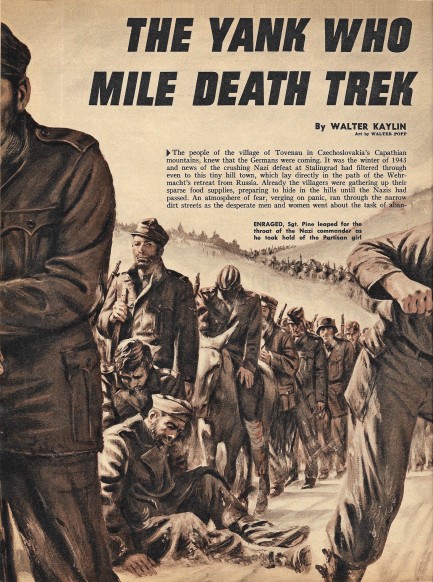 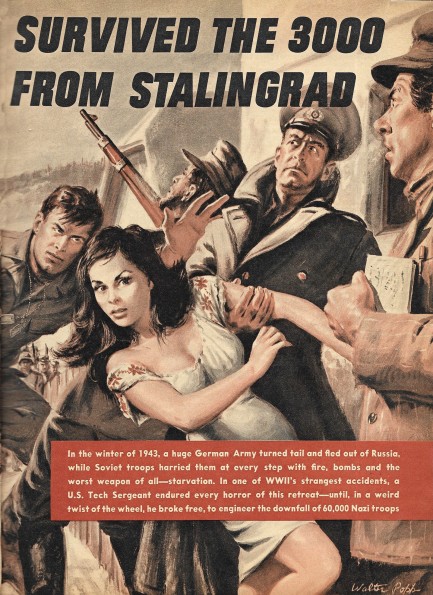 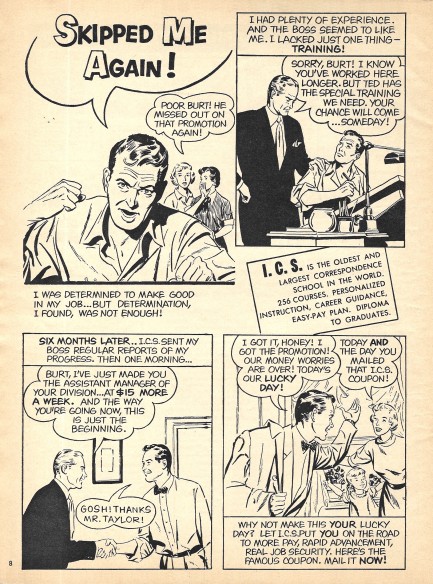 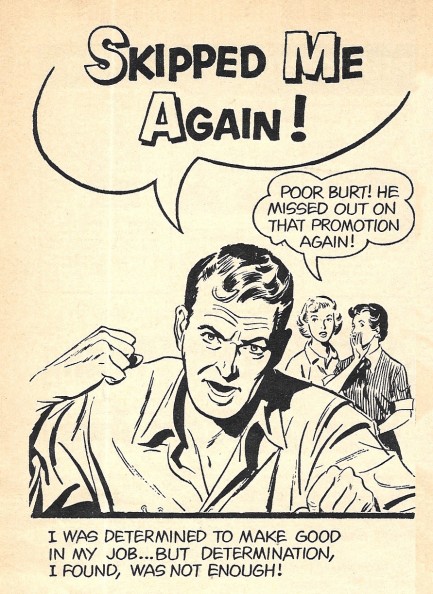 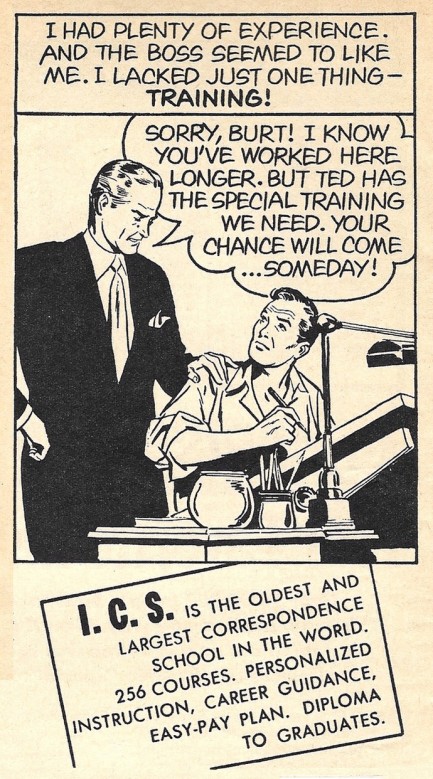 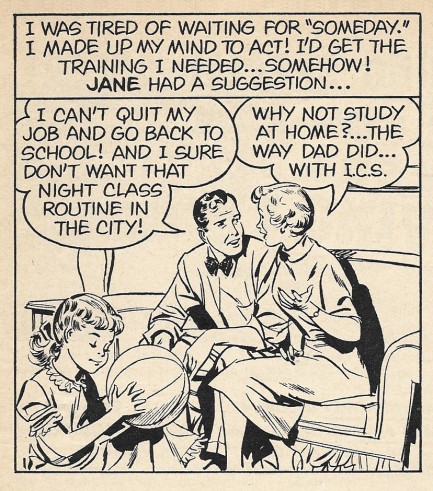 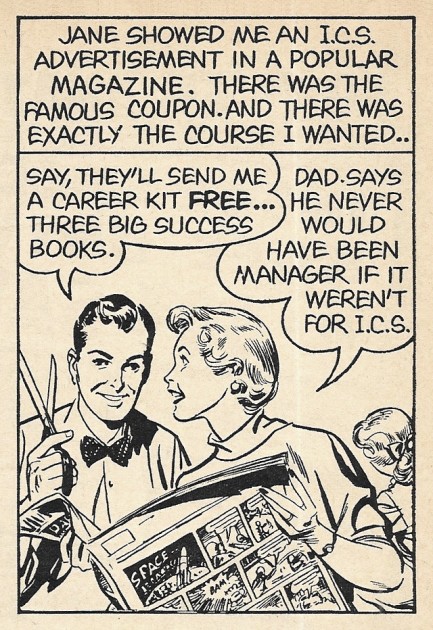 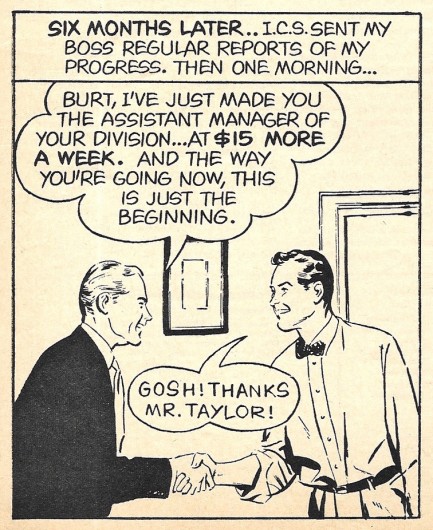 
 It's all skin no wit as tabloid stumbles along on its last legs. 
It's July 14, 1974 and it's getting late in the game for National Informer. This issue shows that the magazine is exhausted of ideas and inspiration, and is bereft of all but the crassest humor. We suspect staff reductions. As magazines decline in circulation they lose pages and bleed staff. This issue is a full eight pages shorter than two years earlier. We aren't sure how much longer Informer lasted, but by this point the writing seems to be on the wall.
One mainstay, though, is resident seer Mark Travis, who offers his thoughts about the far future, predicting that Greenland will become the next frontier by 2050 due to underground volcanoes turning it into a tropical paradise, and Brazil will become a world power by 2075, ranking only after the U.S., China, and the U.S.S.R., thanks to cheap labor and the vast resources of the Amazon.
This guess is not far wide of the mark. The current president of Brazil is selling off the Amazon. But Travis's prediction is undermined by the fact that the U.S.S.R. no longer exists. Future visions tend to be notoriously select, but a non-U.S.S.R. future should be glaringly readable even within swirling clairvoyant mists. Well, no seer is perfect. Maybe Travis will do better in the next issue. You'll find out, because we have more to come.     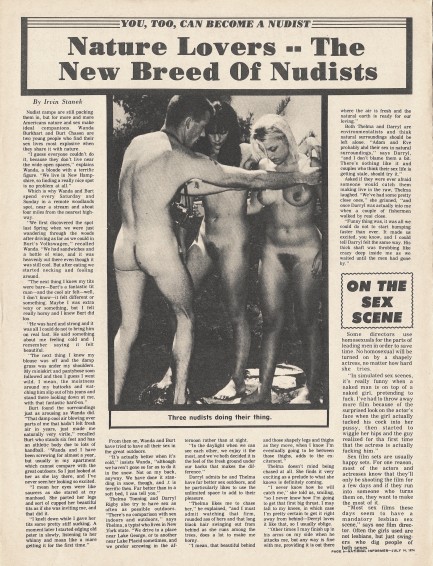 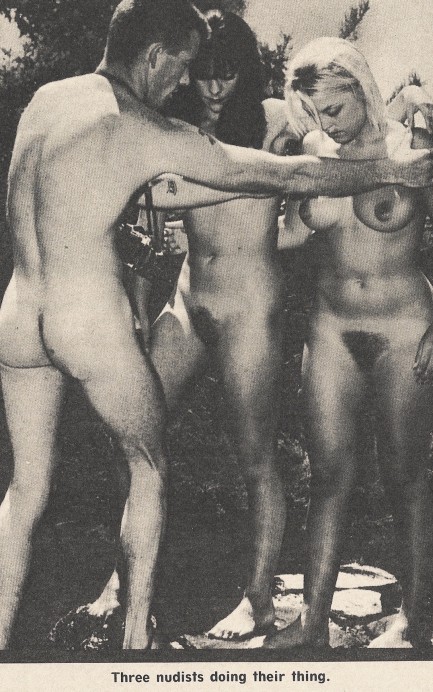    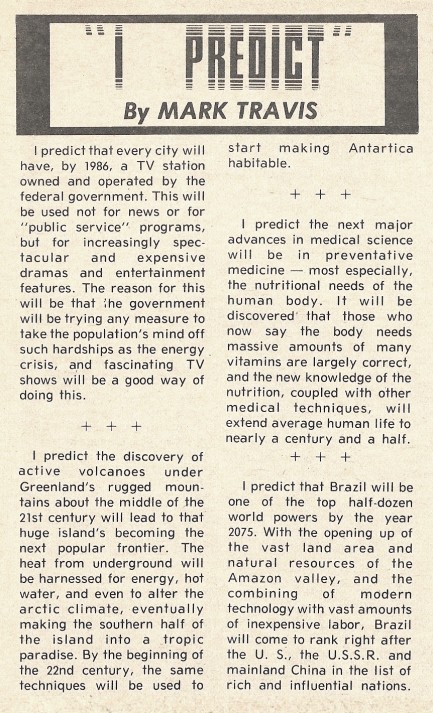  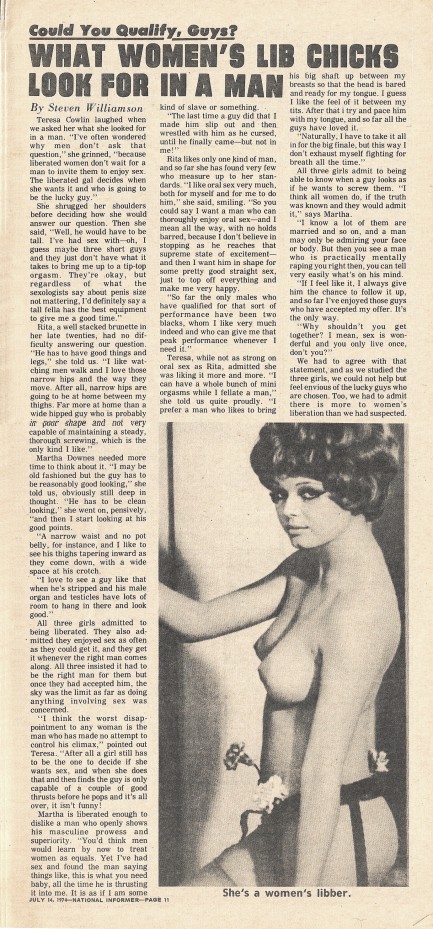   
 Sounds a lot like debacle to us. 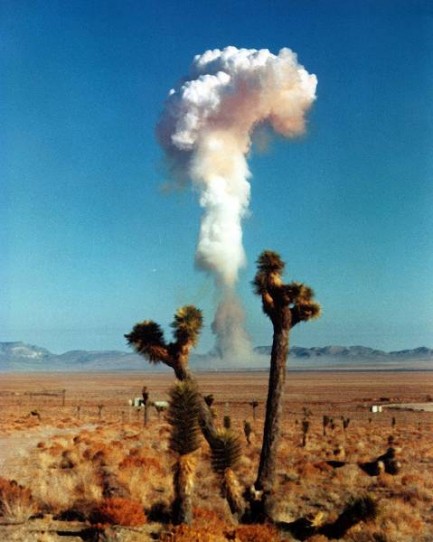
The De Baca nuclear test was part of Operation Hardtack II, a series of thirty-seven Nevada Test Ground blasts squeezed into seven weeks in order to beat a looming deadline—the beginning of a U.S./U.S.S.R. nuclear moratorium. The test ban failed when the Soviets began testing again three years later, a political crisis precipitating that failure, specifically a showdown concerning the status of East Berlin. The test ban would have failed anyway, though, as all test bans have failed, and all future test bans will fail, because nuclear weapons are seen by weak nations as the ultimate defense against invasion by stronger nations. And of course, they’re right. Since only the year 2000, nuclear-armed nations have invaded non-nuclear nations nine times. Conversely, since the dawn of the nuclear era in 1945, a period comprising nearly seventy military encroachments, no nuclear nation has had its mainland invaded. That's the entire uncomplicated why of nuclear weapons. There may be periods of relative inactivity, but as time goes by more nations will build them. Nuclear disaster has no choice but to follow one day. There are two scenarios for survival—either all the nuclear nations agree to reduce and eventually dismantle their nukes, or one nuclear armed nation comes to dominate all the others. Guess what? The second scenario isn't going to happen. Not ever. The De Baca test occurred today in 1958.
 The guy who kicked the hornet’s nest. 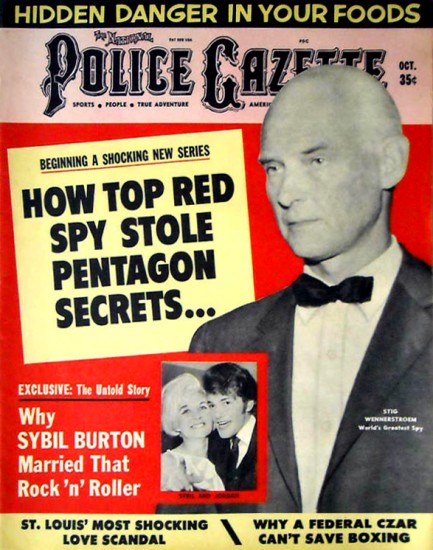
On the cover of this National Police Gazette from December 1965 is a once-infamous Swedish spy named Stig Wennerström. Wennerström was an Air Force colonel who passed Swedish, U.S., and NATO secrets to the Soviets. He’s labeled a red by the Gazette, but that’s a stretch—he served the U.S.S.R. for fifteen years, true, but before that he may have spied for Nazi Germany, who as fascists were as near the opposite end of the political spectrum as it was possible to be. The obvious motivation, then, must have been money, but no, Wennerström didn’t spy for profit any more than he did for political ideology. He came from a moneyed Swedish family and as a colonel was well paid. Nor did fear of blackmail seem to drive him, as there was nothing seriously embarrassing in his past. The answers wouldn’t come until after he was caught. The Swedish state police—SAPO—had directed Wennerström’s maid to snoop around his home. She eventually found incriminating film negatives that resulted in his arrest, and he was convicted of four counts of treason and sentenced to twenty years in prison. During those years he finally answered some questions about his motivation. He claimed that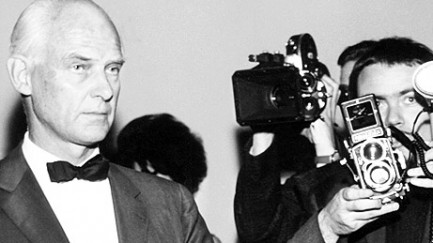 at some point during his time in the military he came to believe that peace could only be maintained through balance, and the secrets he passed helped maintain that balance. The answer was unsatisfactory to most observers, but that was the only one Wennerström would ever furnish. at some point during his time in the military he came to believe that peace could only be maintained through balance, and the secrets he passed helped maintain that balance. The answer was unsatisfactory to most observers, but that was the only one Wennerström would ever furnish. Stig Wennerström served ten years of his sentence and secured parole at age 77. Twenty years later in 2004 while living in a seniors' home, the 97-year-old ex-spy was interviewed by the magazine Aret Runt. It was clear this would probably be his last interview, and he was asked if he had any regrets. His answer: “If I could live my life over again, I am stupid enough to let it be exactly the way it has been so far.” He died two years later at age 99, the questions surrounding his spying mostly unanswered, the crimes he committed mostly fading into history, and the secrets he passed entirely obsolete.
 
Photo of Soviet nuclear test RDS-37, a multi-stage hydrogen bomb similar to Joe 4, airdropped at the Semipalatinsk Test Site, Kazakhstan, U.S.S.R., today 1955.
 Smoke from a distant fire. 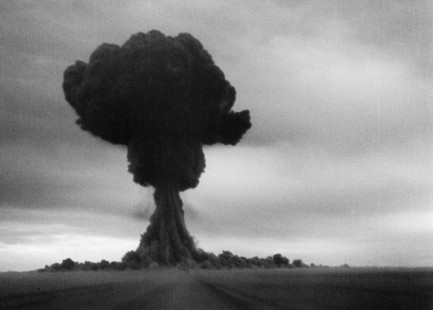
Photo of the Soviet nuclear blast codenamed First Lightning. It was their first atomic test, sixty years ago today, August 29, 1949.
|
 |

The headlines that mattered yesteryear.
2003—Hope Dies
Film legend Bob Hope dies of pneumonia two months after celebrating his 100th birthday. 1945—Churchill Given the Sack
In spite of admiring Winston Churchill as a great wartime leader, Britons elect
Clement Attlee the nation's new prime minister in a sweeping victory for the Labour Party over the Conservatives. 1952—Evita Peron Dies
Eva Duarte de Peron, aka Evita, wife of the president of the Argentine Republic, dies from cancer at age 33. Evita had brought the working classes into a position of political power never witnessed before, but was hated by the nation's powerful military class. She is lain to rest in Milan, Italy in a secret grave under a nun's name, but is eventually returned to Argentina for reburial beside her husband in 1974. 1943—Mussolini Calls It Quits
Italian dictator Benito Mussolini steps down as head of the armed forces and the government. It soon becomes clear that Il Duce did not relinquish power voluntarily, but was forced to resign after former Fascist colleagues turned against him. He is later installed by Germany as leader of the Italian Social Republic in the north of the country, but is killed by partisans in 1945.
|

|
|

It's easy. We have an uploader that makes it a snap. Use it to submit your art, text, header, and subhead. Your post can be funny, serious, or anything in between, as long as it's vintage pulp. You'll get a byline and experience the fleeting pride of free authorship. We'll edit your post for typos, but the rest is up to you. Click here to give us your best shot.

|
|








































































 at some point during his time in the military he came to believe that peace could only be maintained through balance, and the secrets he passed helped maintain that balance. The answer was unsatisfactory to most observers, but that was the only one Wennerström would ever furnish.
at some point during his time in the military he came to believe that peace could only be maintained through balance, and the secrets he passed helped maintain that balance. The answer was unsatisfactory to most observers, but that was the only one Wennerström would ever furnish.







































































